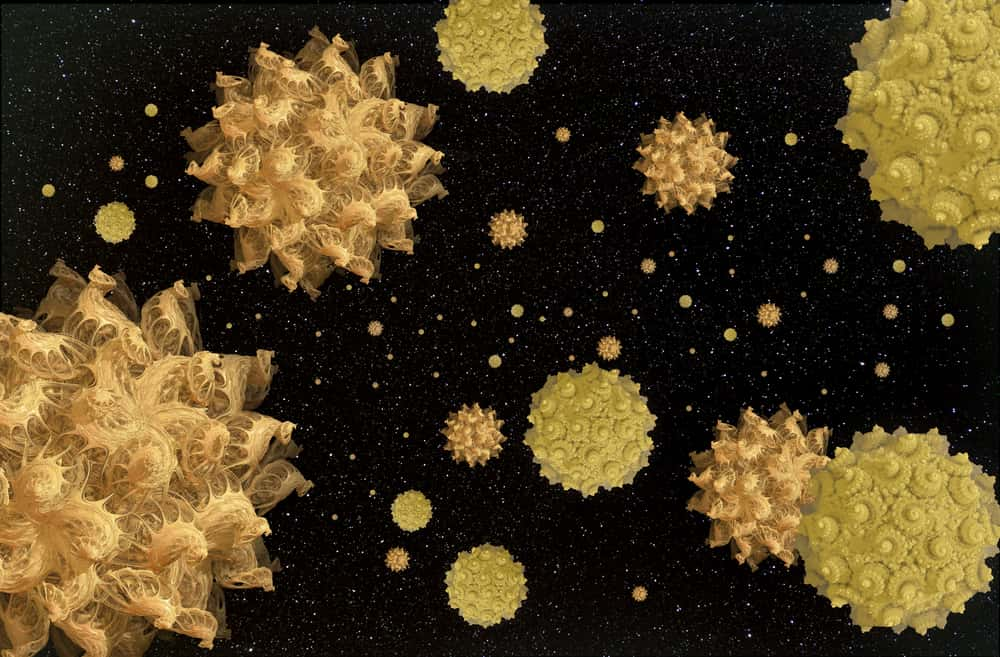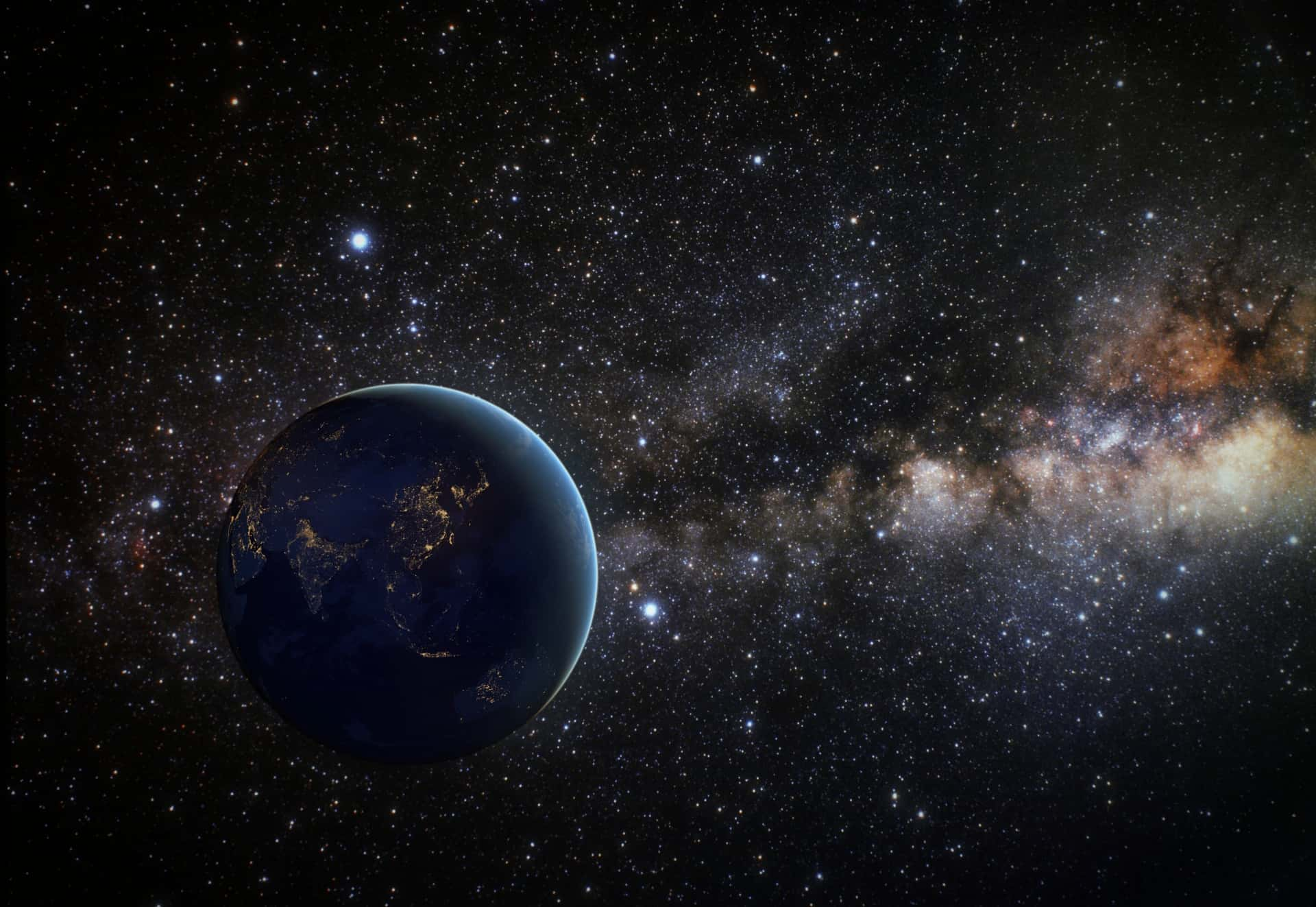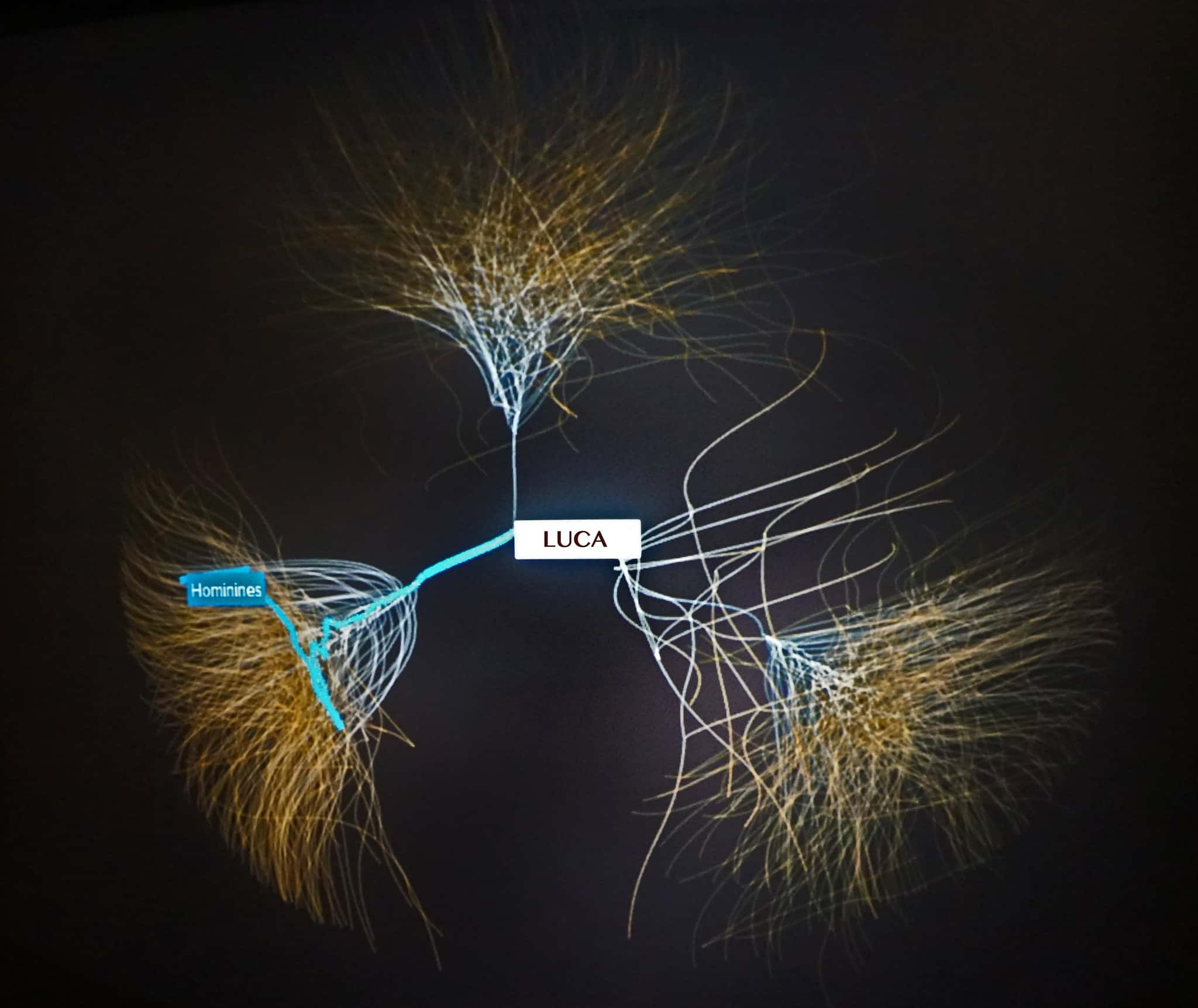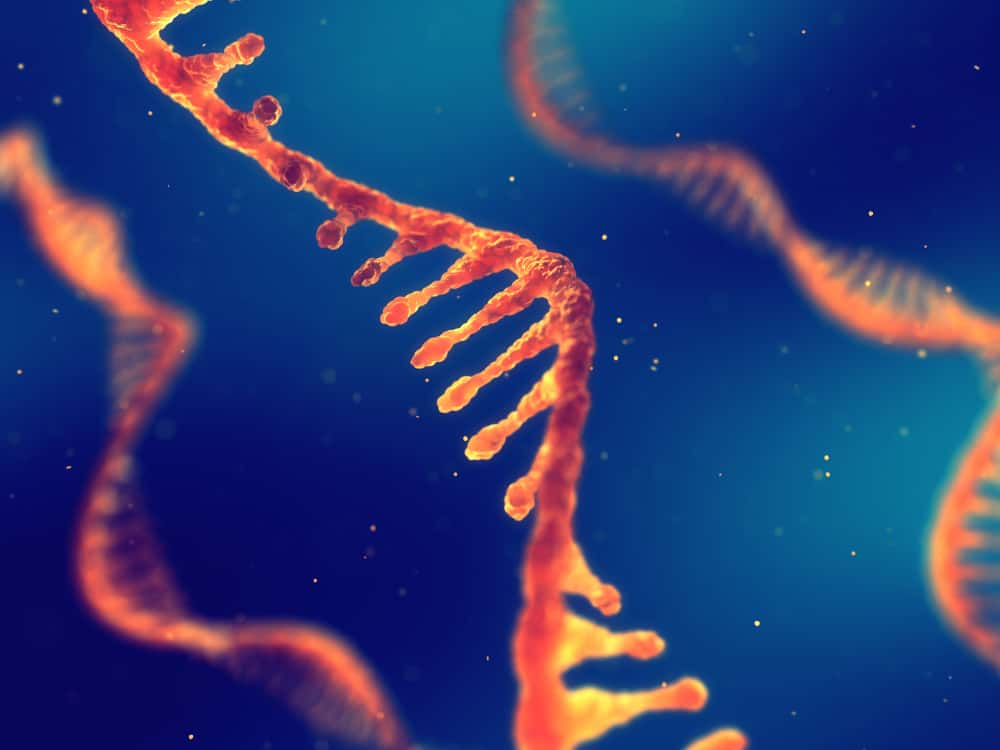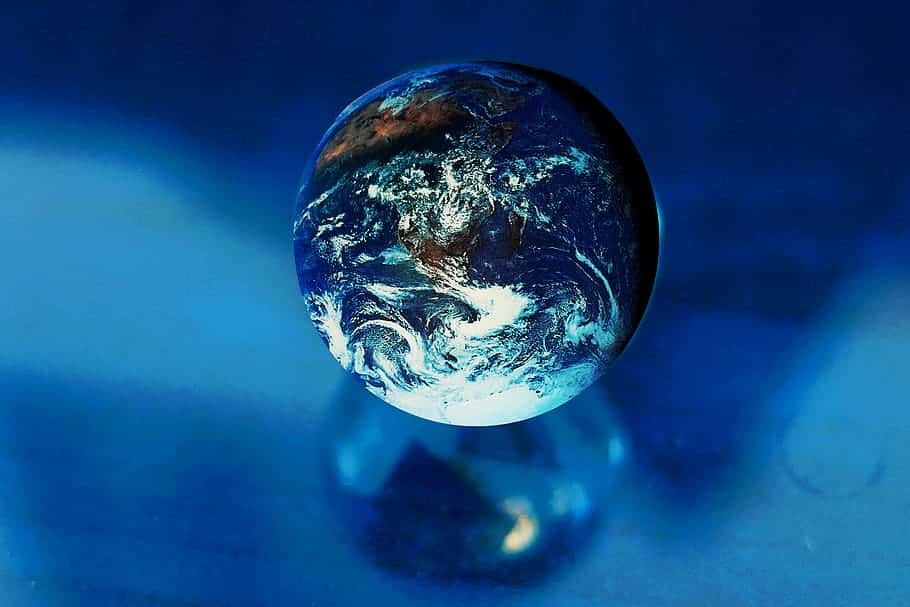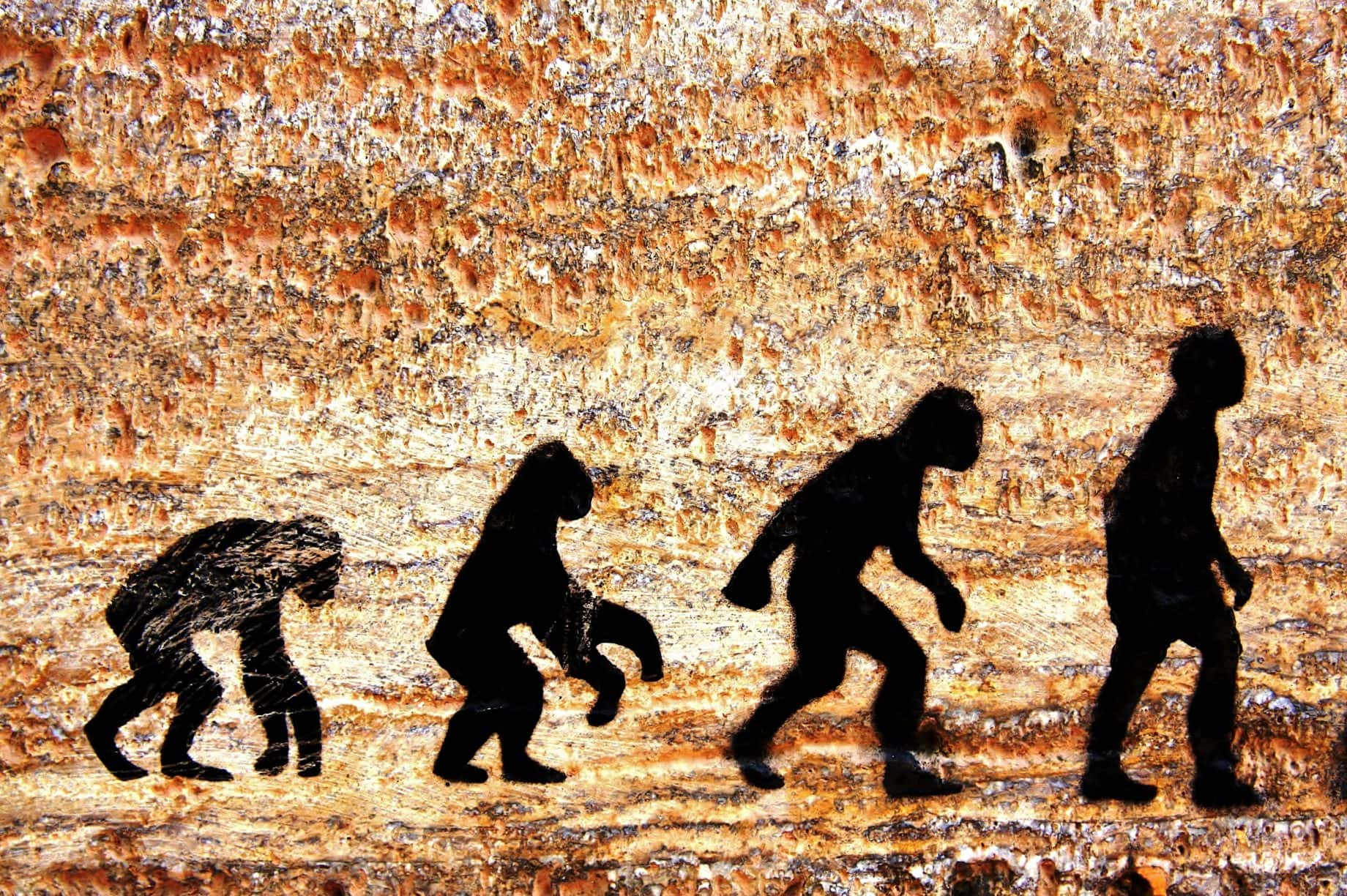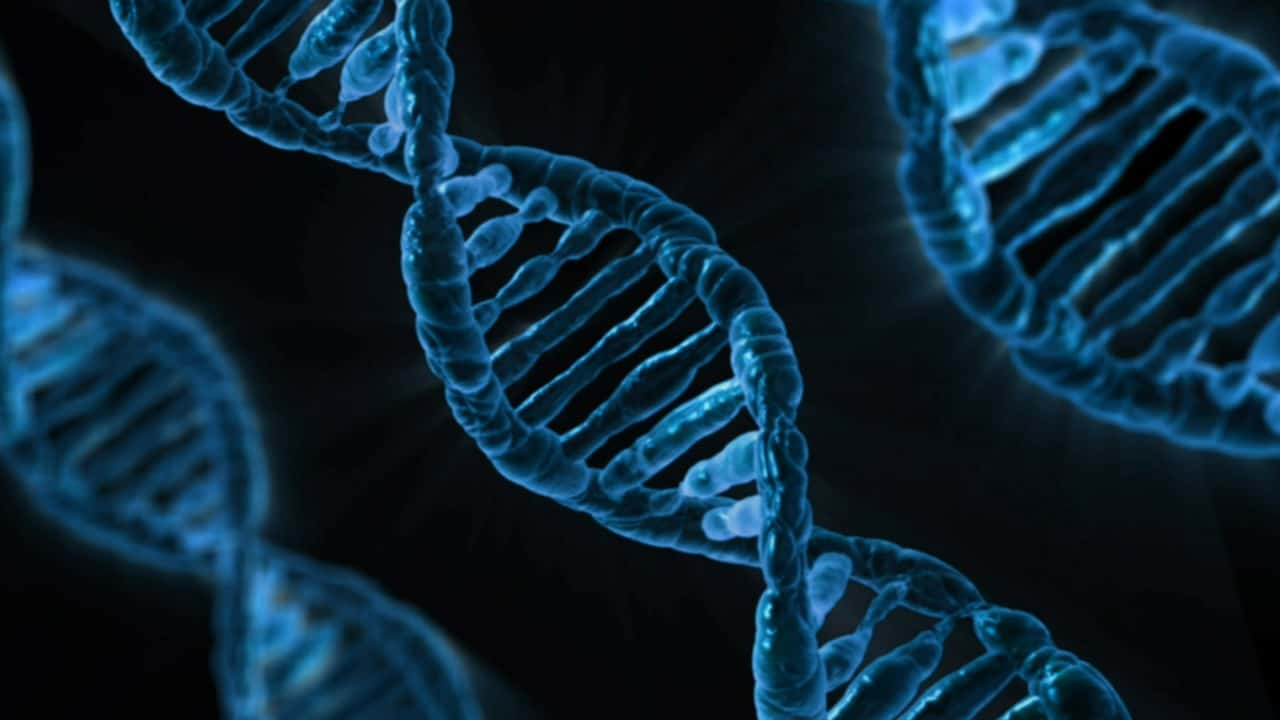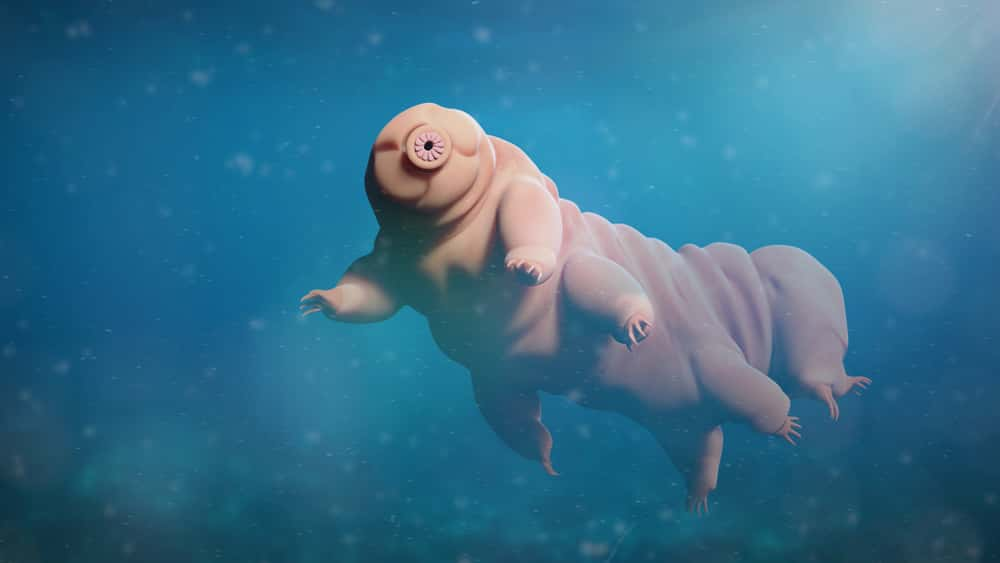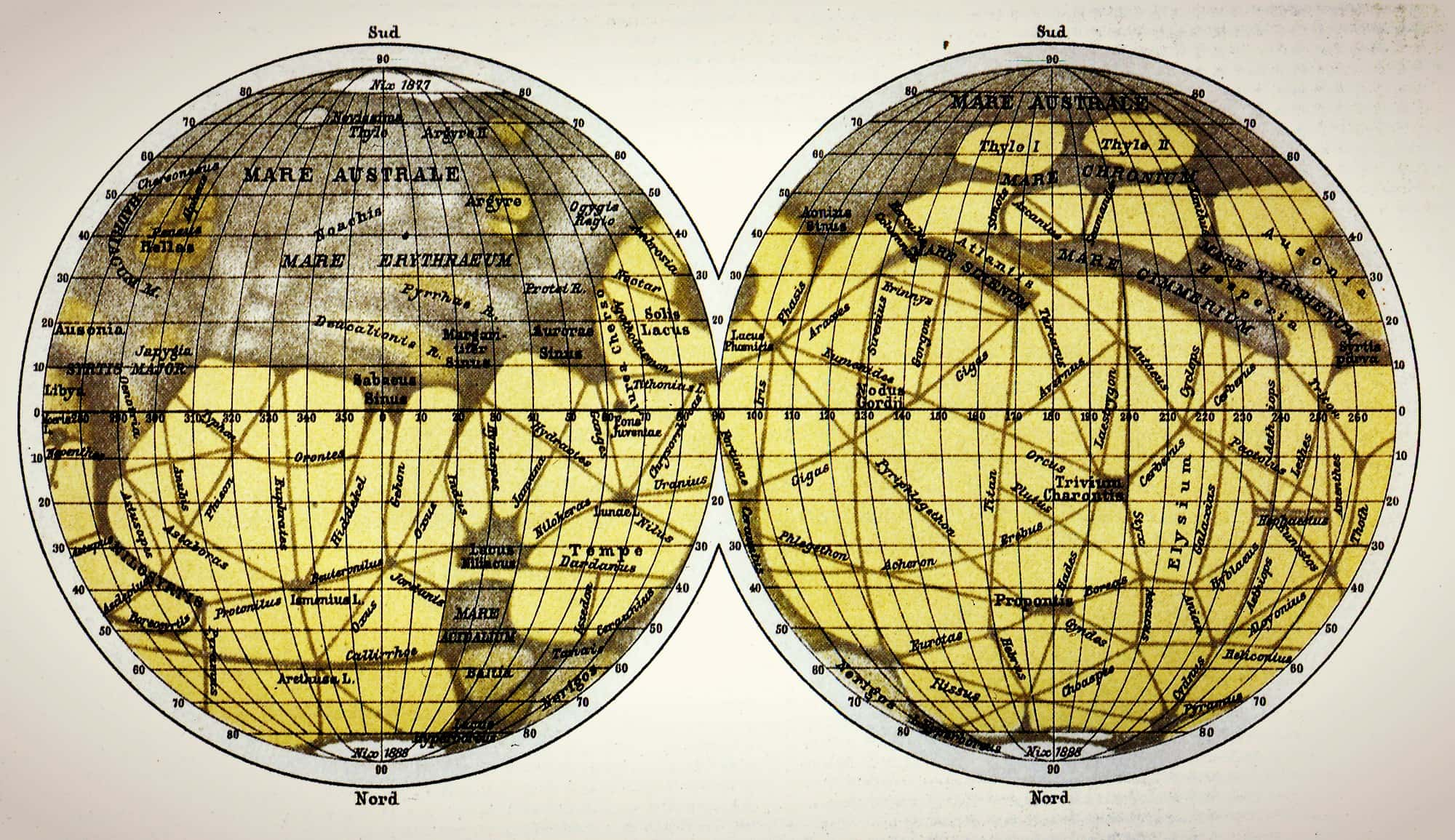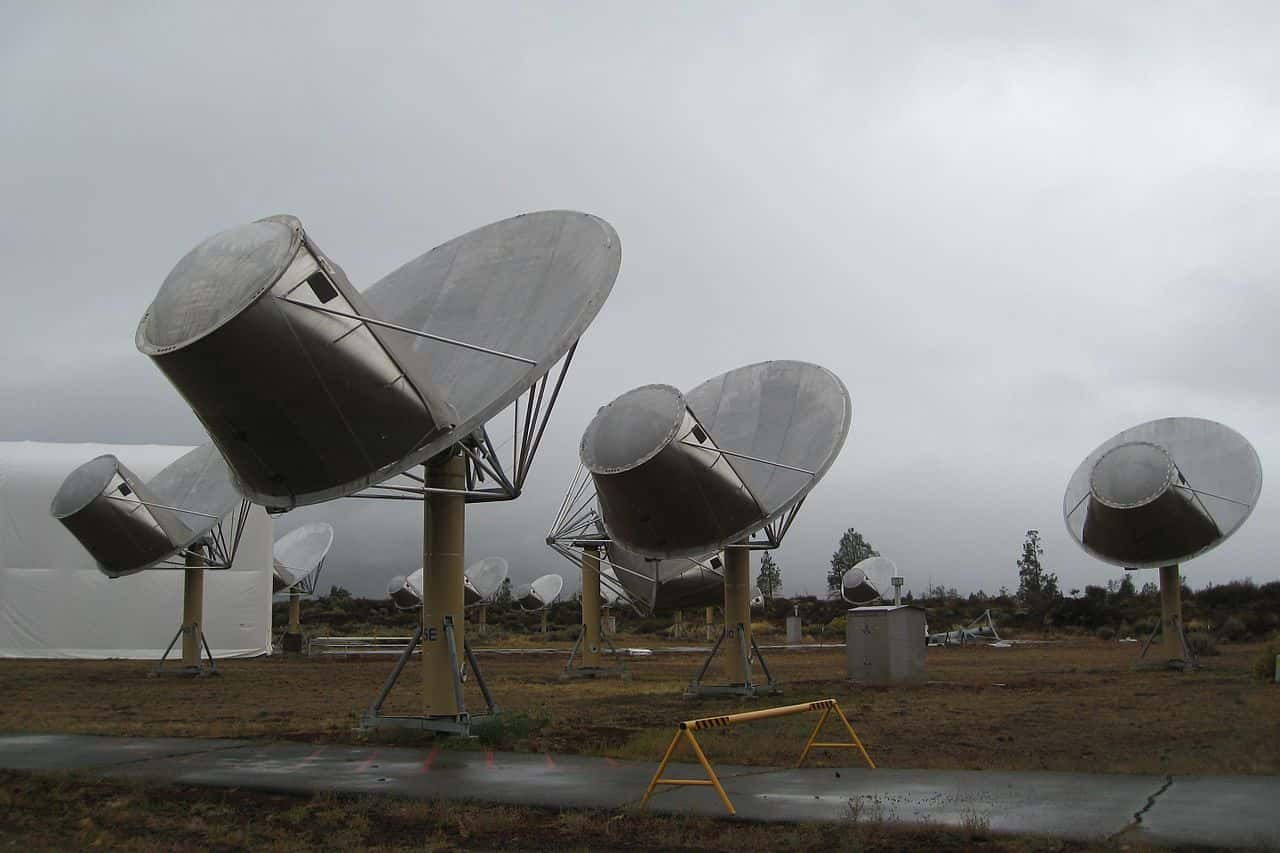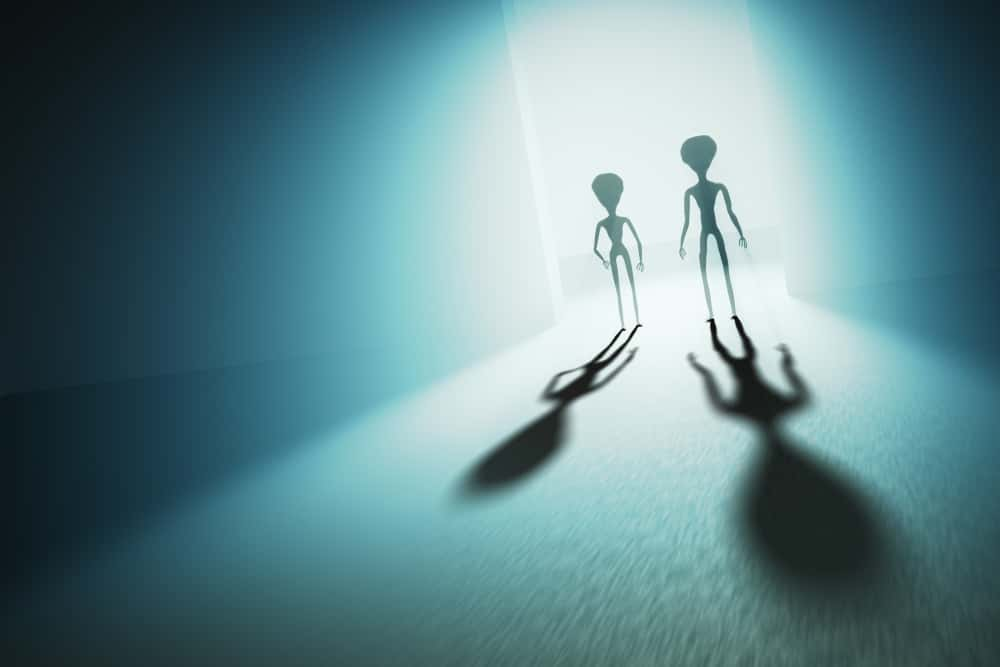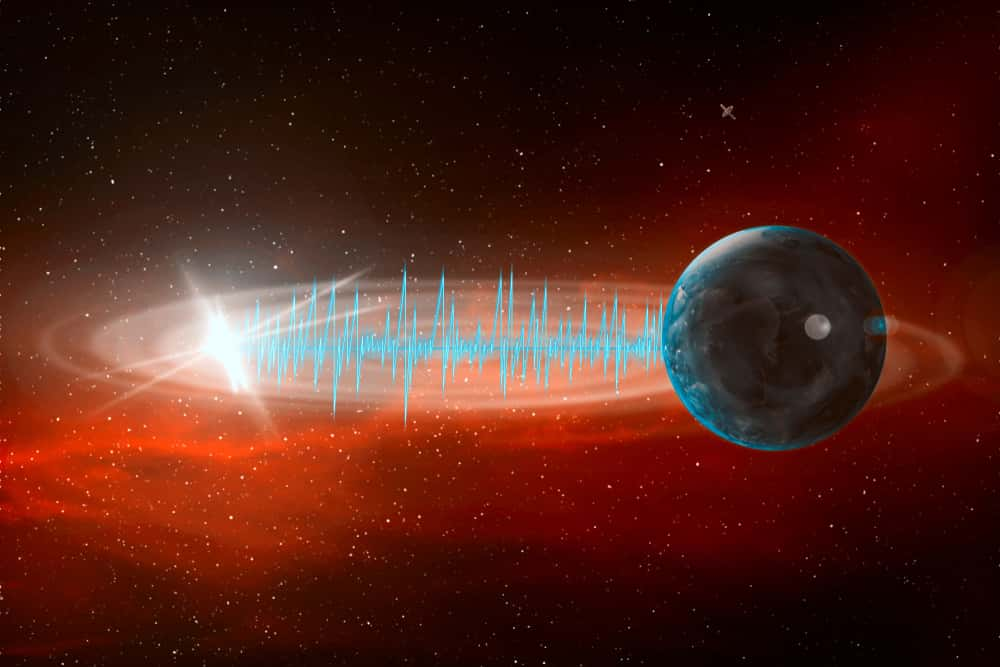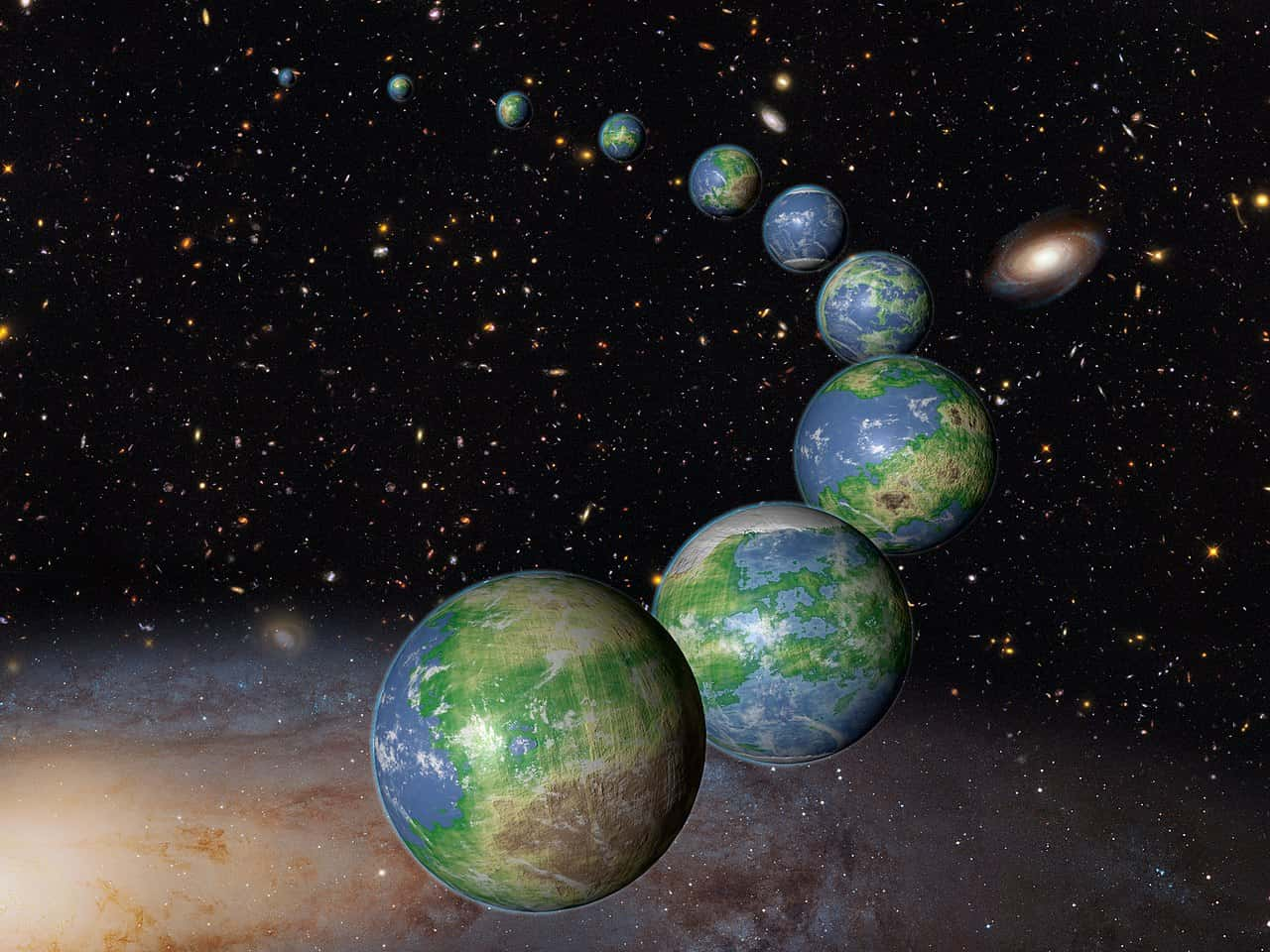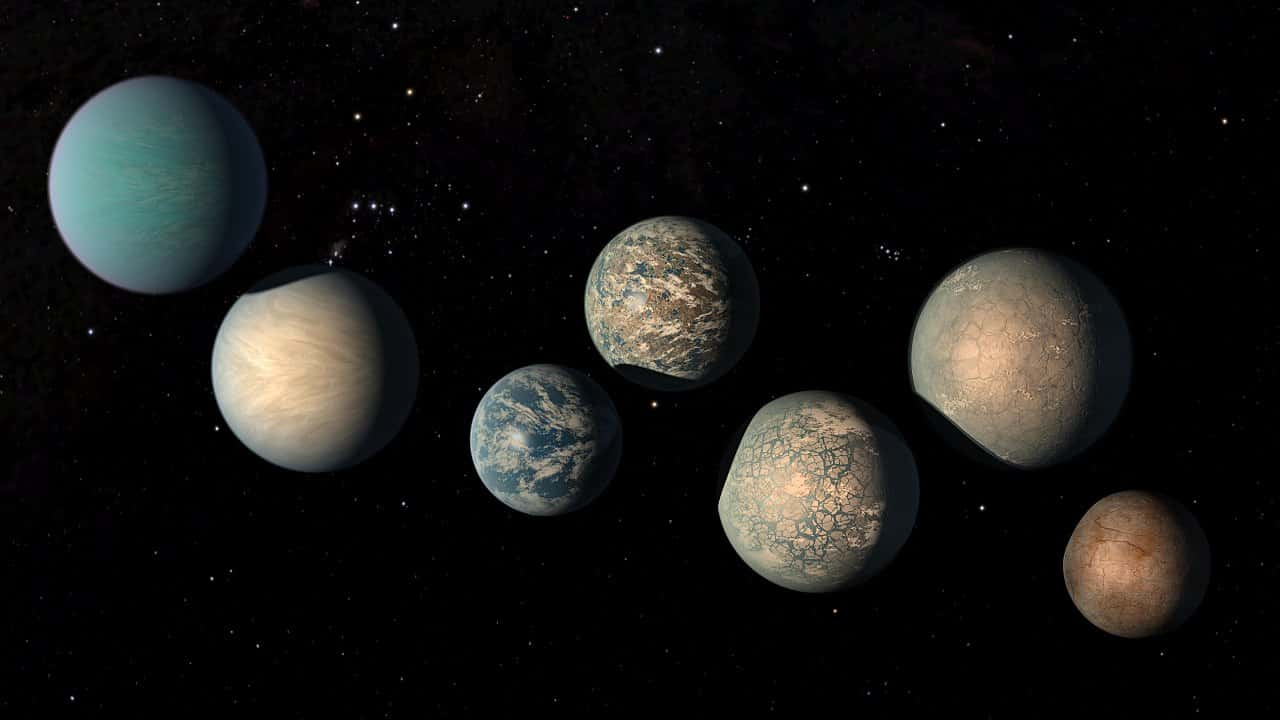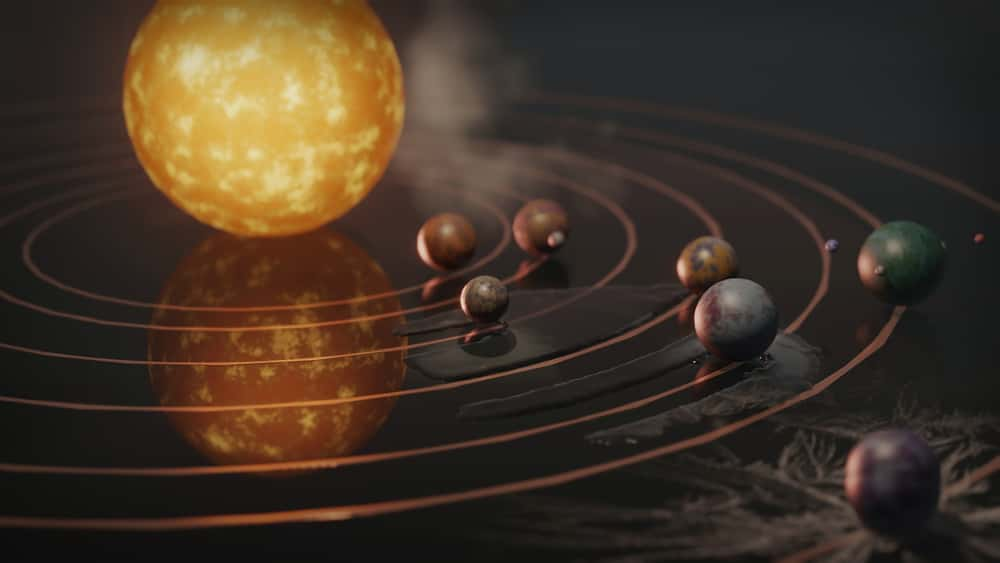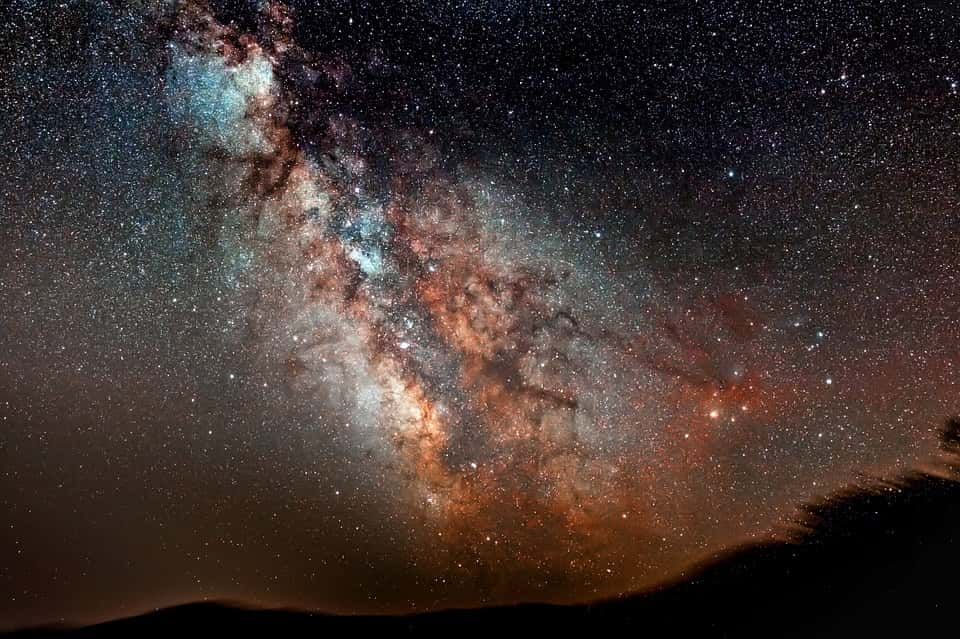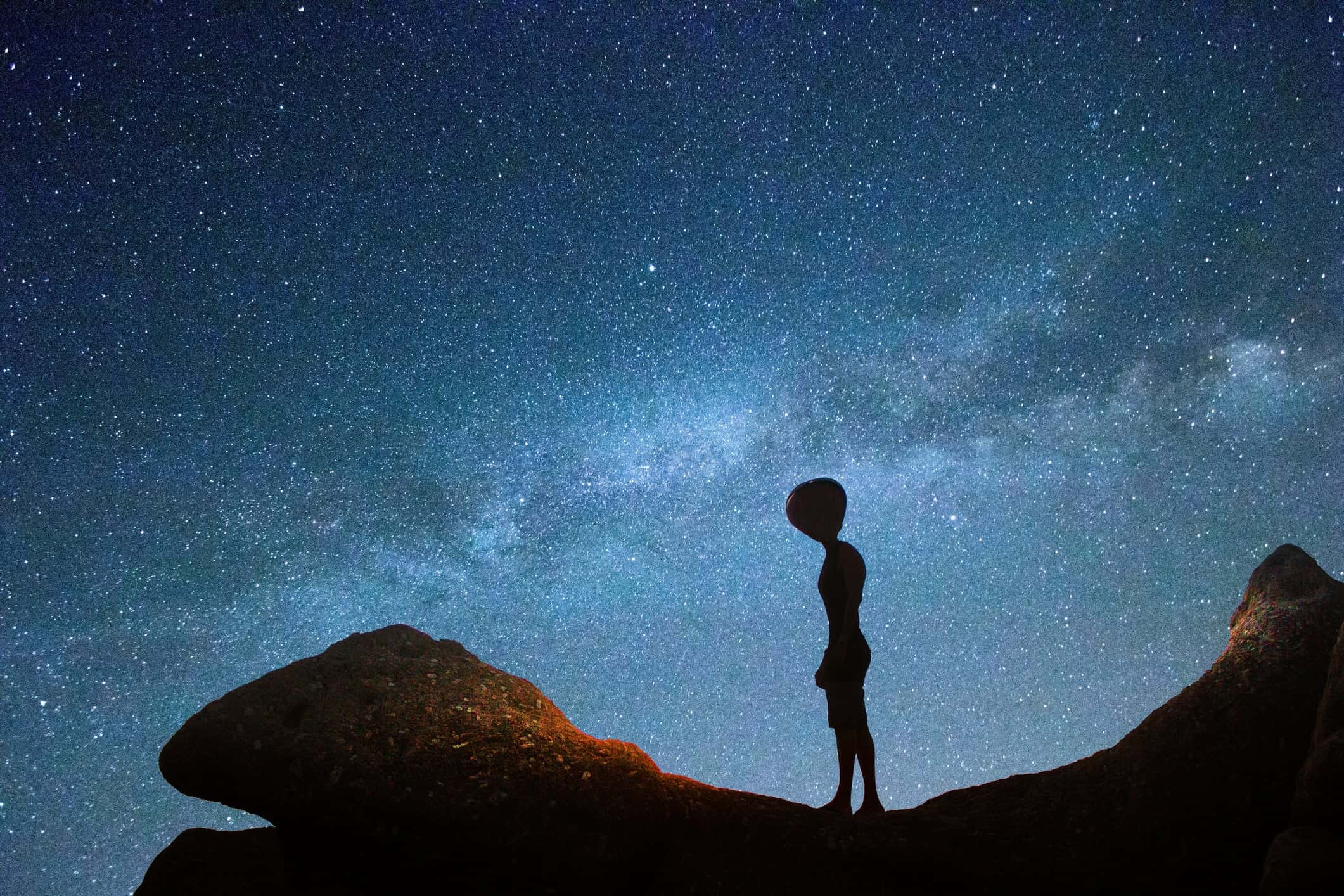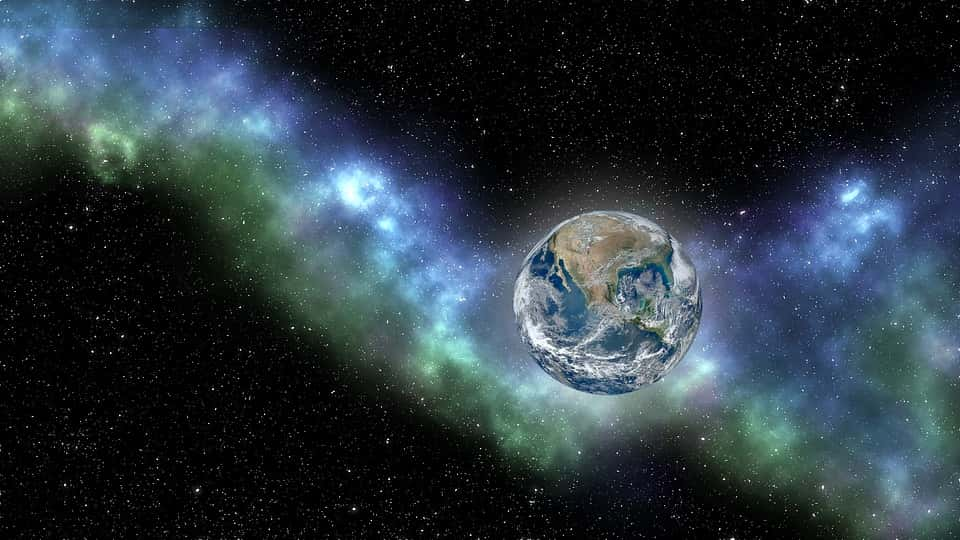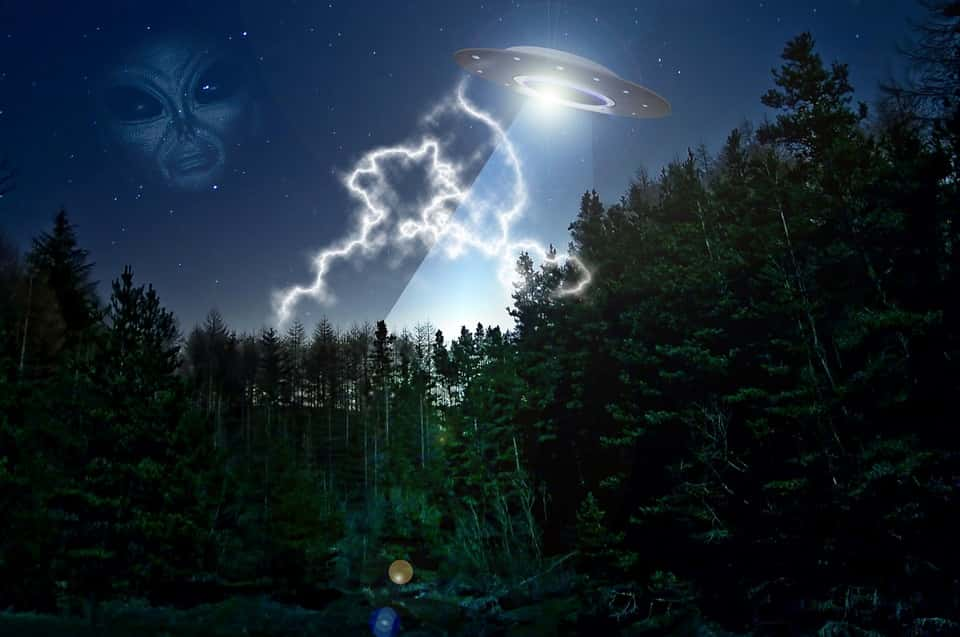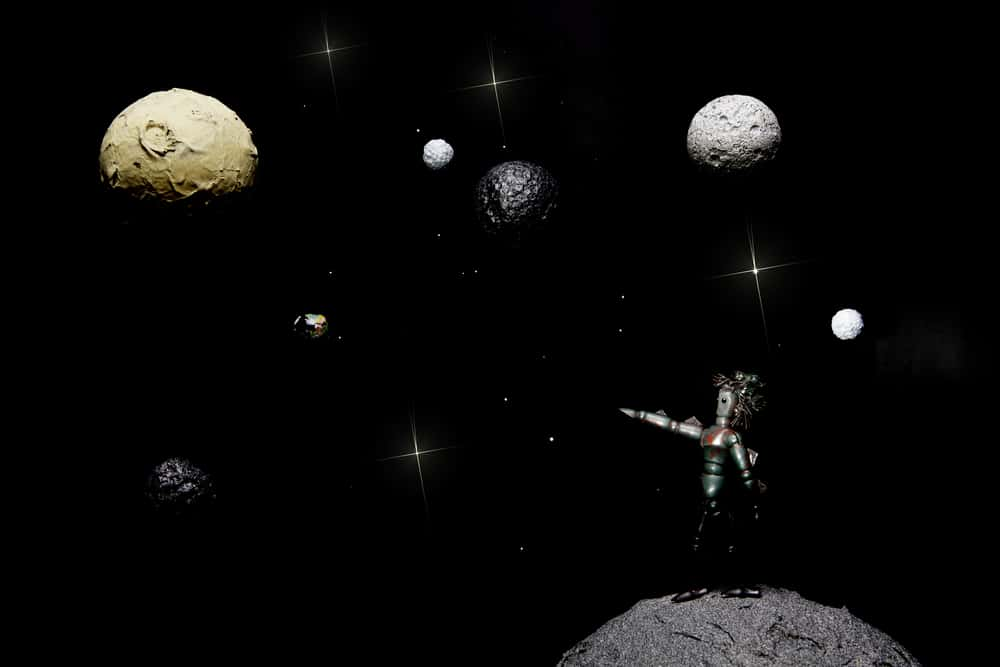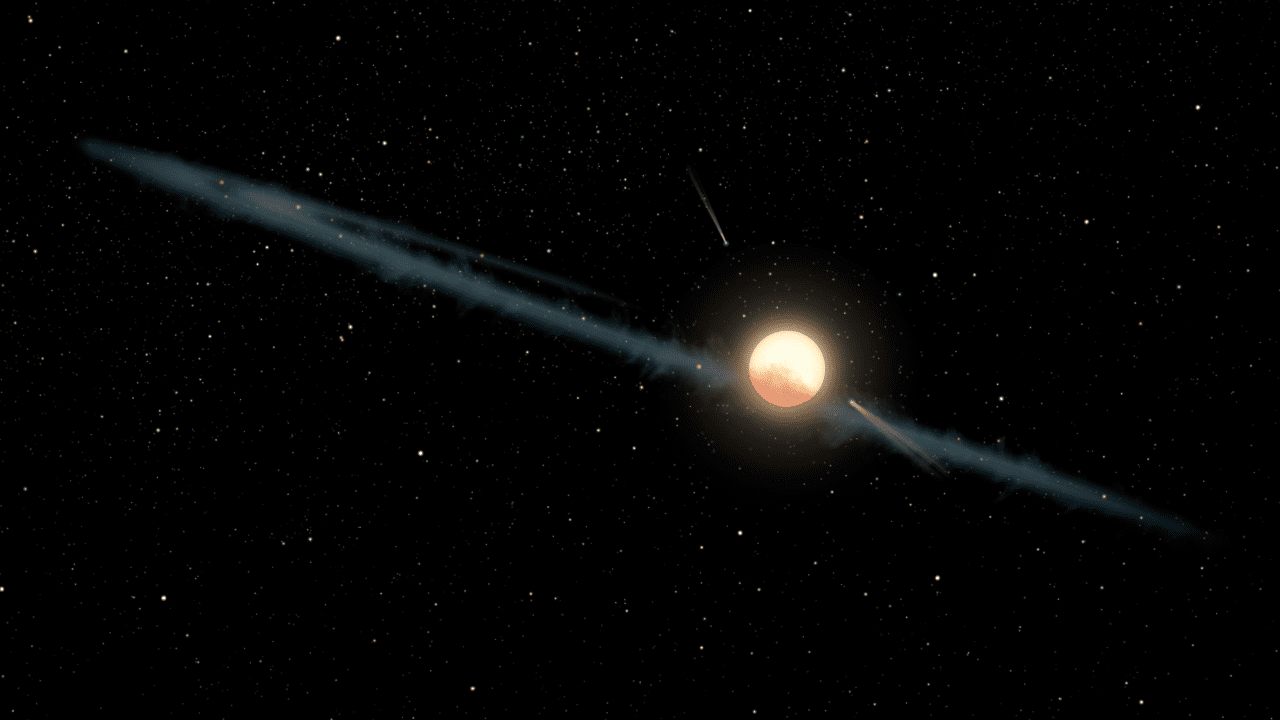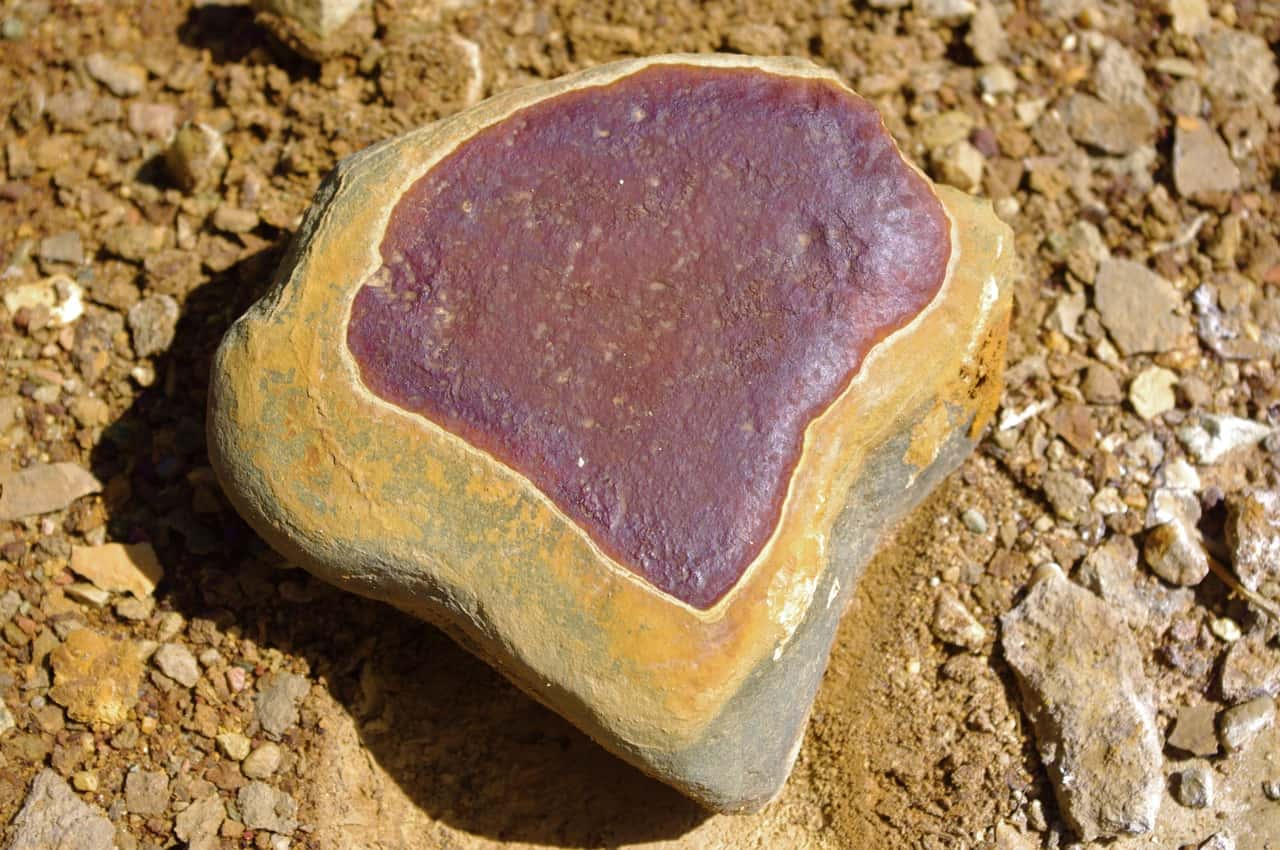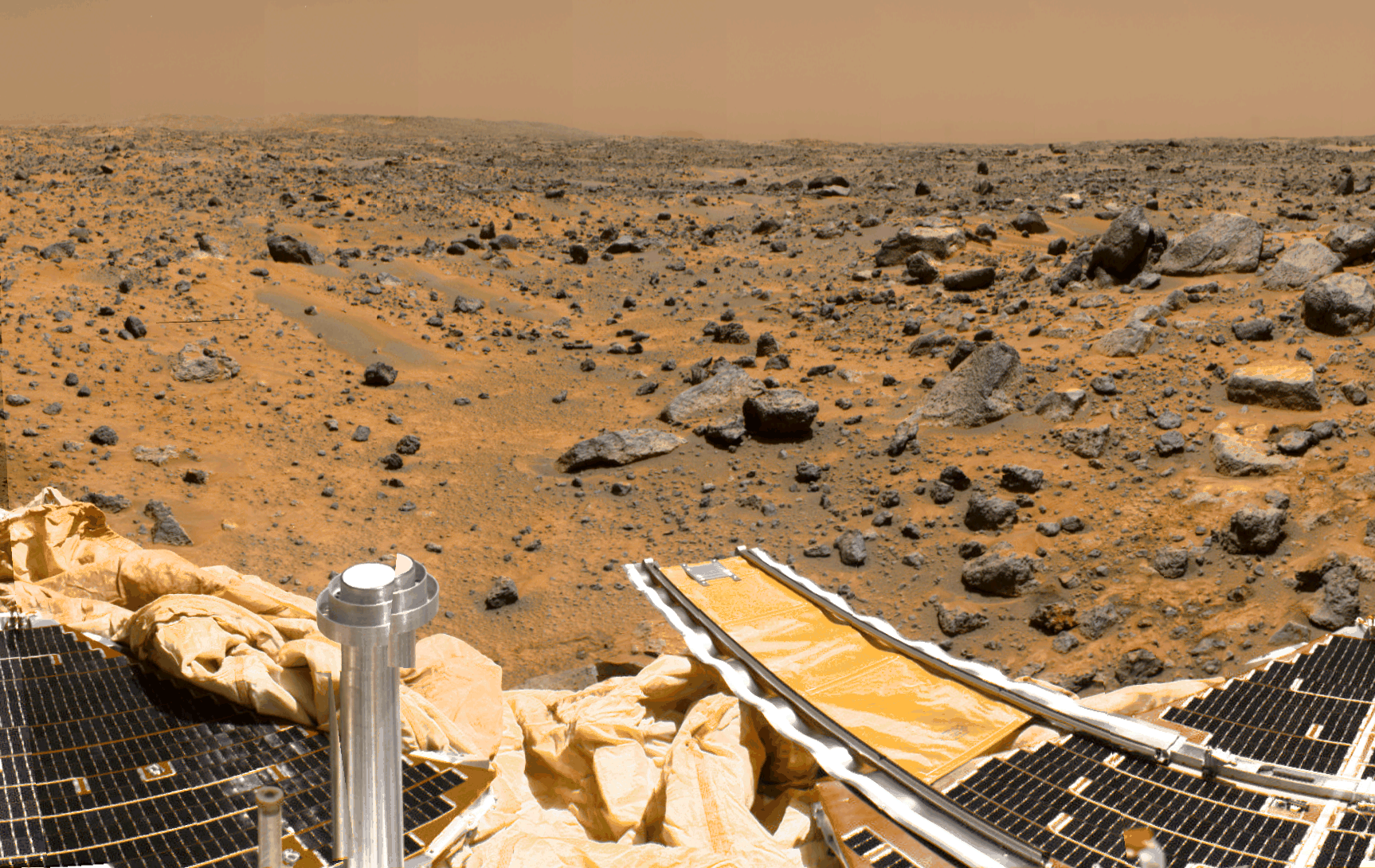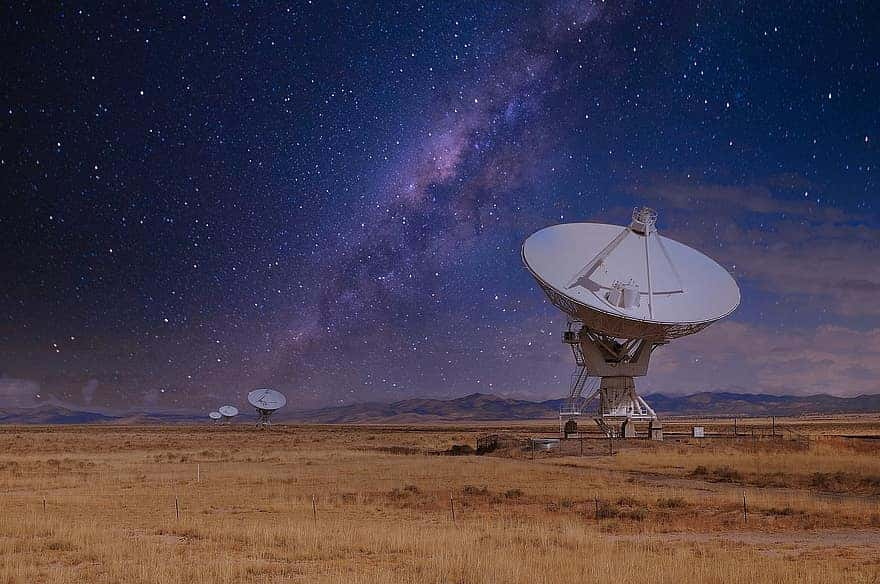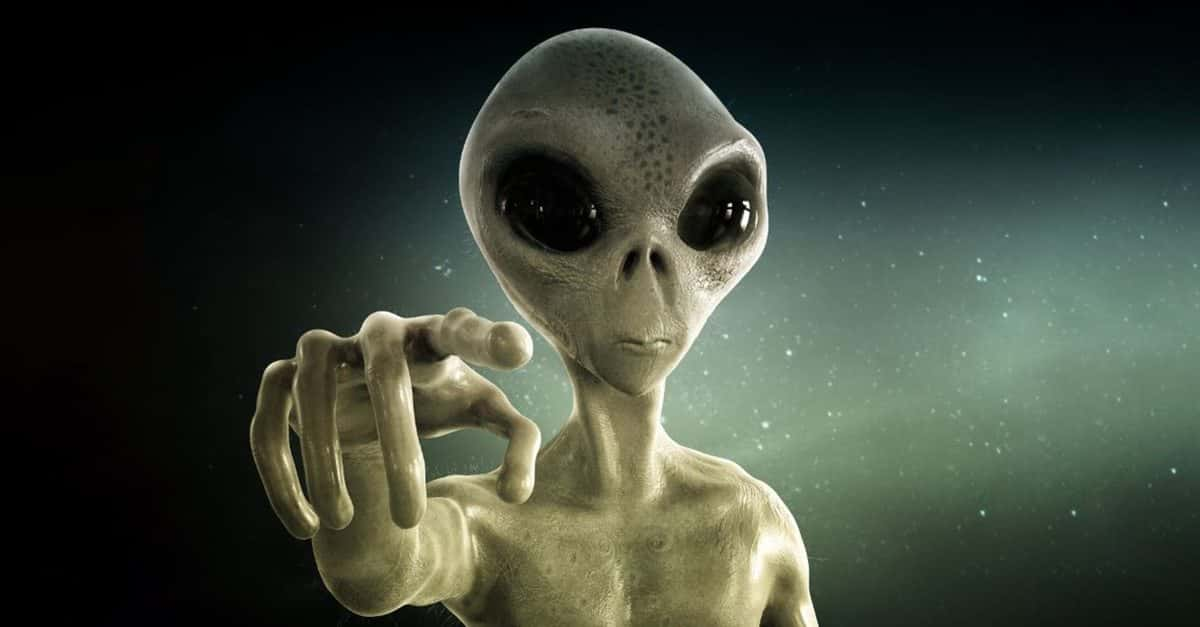Far Beyond the Clouds
David Bowie—an artist who knew a thing or two about space aliens—famously asked: “Is there life on Mars?” Scientists have long wondered the same thing. And if not on Mars, then where? With increasingly sophisticated techniques, those scientists are now beginning to solve the mystery of extraterrestrial life, and what that life might look like.
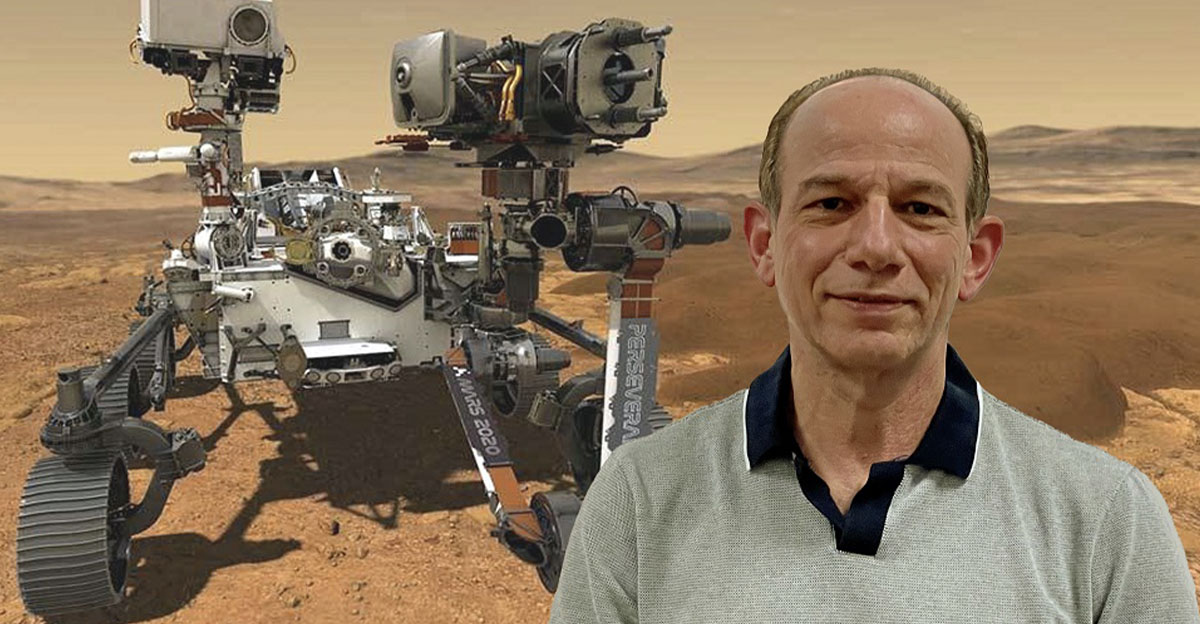
42. The Spark
Scientists have a pretty good idea of how life evolved on Earth over the last 3.5 billion years or so. Small microbial organisms gradually developed into the complex, multi-cellular life we see around the world today. They’re less sure about how that life began in the first place. Some suggestions have been lightning “sparking” necessary amino acids into existence, or clay acting as a surface for cells to organize themselves into more complex patterns.
41. It Came from Outer Space
One possible, though imaginative, answer is outer space. Panspermia is the idea that cosmic debris like meteorites could have brought microbial life to Earth from as far away as different solar systems.
40. There at the Beginning
While there is conclusive proof of life on Earth dating to about 3.5 billion years ago, there is also evidence that life on Earth began as early as 4.4 billion years ago, which would be almost simultaneous with the creation of Earth itself.
39. LUCA
The first known earthlings were single-celled microorganisms found at the Pilbara Craton in Western Australia. These cells quickly adapted into complex life forms, including the most recent common ancestor to all living things. The LUCA—last universal common ancestor—was a single-celled organism which featured 355 genes common in all living things today, from bacteria to human beings.
38. RNA
Like DNA, RNA is a molecule which helps organize genes. In fact, scientists believe it may even predate DNA, and that the earliest forms of life used RNA to pass genetic traits forward. In 2015, NASA scientists were able to recreate RNA under space-like conditions, suggesting that life from other planets could have survived a trip to Earth, via RNA.
37. It All Adds Up
DNA (Deoxyribonucleic acid) is a macromolecule which stores biological information, and which is present in all living organisms. Scientists estimate that the sum total of all the DNA on Earth weighs 50 billion tonnes.
36. Truly BananasTED
All life came from small single-celled organism, and so humans have plenty in common with all living things. Not just animals either—for example, human beings and bananas share about 50% of their genetic makeup.
35. Gaia Hypothesis
Suppose the Earth itself were all one single animal. One theory, proposed by the chemist James Lovelock, suggests that the Earth is just a single organic super-system, where all individual creatures act as components of a self-regulating whole.

History's most fascinating stories and darkest secrets, delivered to your inbox daily.
34. Distant Relatives
You’re probably familiar with the Neanderthals, modern humans’ extinct evolutionary cousin. Most modern humans still have some Neanderthal DNA. Less—a lot less—is known about the Denisovans. Like the Neanderthals, they were a competing human species who lived in Siberia roughly 80,000 years ago.
33. Who Are You?
The Denisovans interbred with humans in two distinct bursts of contact, in two regions: Oceania and Northern Asia. But while the Denisovans do share some traits with the Neanderthals, and some modern humans share minute traces of Denisovan DNA, no one has yet been able to figure out who the Denisovans were—or what. They seem to have lived in total isolation for thousands of years before interacting with other human species.
32. Notable Misquote
Darwin was not the first to propose a theory of evolution—though his was the most coherent version, supported by the best available scientific evidence. Likewise, the slogan “survival of the fittest” did not come from Darwin; the quote is attributable to the philosopher Hubert Spencer.
31. Useless People Tricks
For evidence of evolution in action, try wiggling your ears. Can you do it? 85% of people can’t, even though our ancestors could. The ability to manipulate the Auricularis muscles helped our primate ancestors to hunt and to avoid getting lost; as we adopted a more communal lifestyle, such a feature became redundant.
30. A Load of Junk
Even some DNA has no apparent function. Almost 98% of the human genome is made up of this “junk DNA,” DNA which doesn’t code proteins. Sounds like the contents of the bottom drawer in my kitchen—98% junk and 2% useful stuff.
29. To the Extreme
Earth is host to all kinds of weird creatures. Some of the strangest earthlings are “extremophiles,” creatures who live in environments that thrive in unexpected, inhospitable environments. Astrobiologists think these creatures might help us imagine what life on other planets might look like. If you’ve seen a photo of a tardigrade, a micro-animal that is often considered an extremophile, you’d probably agree.
28. From the Streets
For examples of extremophiles, look no further than Trinidad’s Pitch Lake. This naturally formed lake of liquid asphalt is home to a wide variety of microbes which require virtually no water or oxygen, and feed on hydrocarbon.
 Wikimedia Commons, Martina Jackson
Wikimedia Commons, Martina Jackson
27. Inner Space
Other extremophiles have been found within polar ice, or deep in the cold, dark bottom of the oceans. Helicobacter pylori is an acidophile—a creature that survives in extremely acidic environments—that lives in the stomach acid of animals, including human beings.
26. Mars and Venice
In our own solar system—and imagination—the most likely candidate for life has always been our nearest neighbor Mars. In 1877, Italian astronomer Giovanni Schiaparelli claimed to observe on the surface of Mars a network of canals which spanned the entire planet, by which Martians perhaps traveled. His claim was backed up well into the 20th century by astronomer Percival Lowell.
25. On Closer Inspection
In all fairness, Schiaparelli’s equipment wasn’t quite as sophisticated as electron telescopes and planetary rovers. His “canals” turned out to be a variety of optical illusions and other easily explained phenomena.
24. SETI
In their quest for extraterrestrial life, NASA has allied with the non-profit SETI Institute. SETI (an acronym for the Search for Extra-Terrestrial Intelligence) is dedicated to a number of activities, from research to education and outreach, all dedicated to finding life on other worlds (and preparing the public for that discovery).
23. The Paradox
For all our searching, theorizing, and hypothesizing, the sad fact remains: we still haven’t found conclusive evidence of intelligent alien life. This is the Fermi Paradox: if intelligent life is possible elsewhere as it is on Earth, if they can make contact with us as we’ve tried to make contact with them…where are they?
22. Wow!
If the aliens do have technology which far surpasses our own, perhaps they’ve tried to contact us. In 1977, astronomers picked up a radio signal 30 times louder than standard radio noise, originating more than 120 light-years away. The find was so exciting that the astronomers wrote “Wow!” on the transcript. There is no specific evidence that the noise is coming from an alien civilization yet, but it is an anomaly.
21. To The Edge
While it once seemed like Earth was the only planet that could contain life—as we understand it—the number of planets that could potentially harbor life has grown to 40 billion! That number only continues to grow as we probe deeper and deeper into the universe.
20. Just Around the Corner
Earth’s nearest possibly inhabitable exoplanet is Proxima b, which orbits the star Proxima Centauri, four light-years away. Proxima b’s mass is slightly greater than that of Earth, but it should be just the right temperature for liquid water.
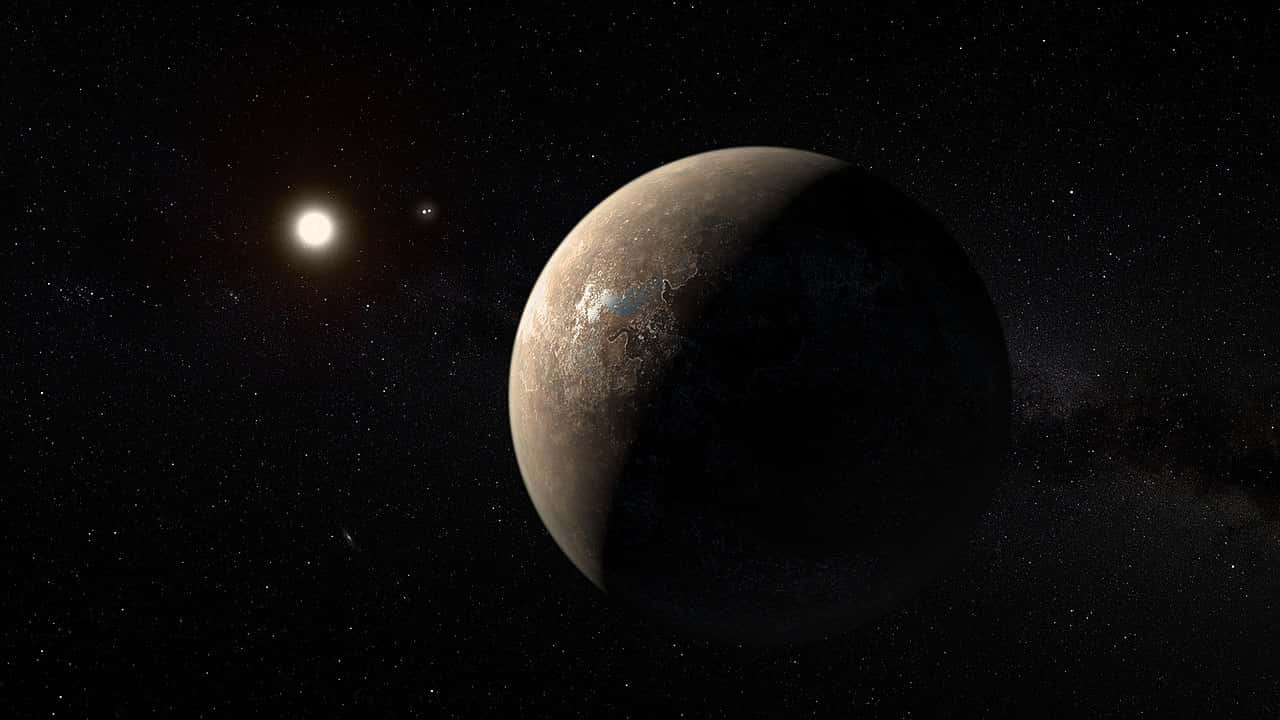 Wikimedia Commons, ESO/M. Kornmesser
Wikimedia Commons, ESO/M. Kornmesser
19. Take Your Pick
One group of planets huddled around the Trappist-1 star looks particularly promising. The seven rocky planets are all about the same size as Earth and have the potential for water. They are also close, with each planet being much closer to its neighbor than Earth is to Mars, and much closer to their sun than Mercury is to our sun. Normally, that would be too hot for life, but Trappist-1 burns much less brightly than our sun. If the Trappist-1 cluster is everything astronomers predict, any of these planets would make a fine home.
18. The Goldilocks Zone
Any inhabitable planet will likely be in the “Circumstellar Habitable Zone,” the position in a planetary system where the distance from the orbited star is sufficient to support liquid water. Astronomers call this “the Goldilocks Zone” because it is neither too hot nor too cold, but jussst right.
17. Life As We Don’t Know It
If there were life on other planets, what would it look like? How would it function? It seems unlikely that aliens would look much like us if they were from vastly different environments. That’s where exobiology comes in. Exobiology is a field of science devoted entirely to how extraterrestrial environments might affect life.
16. You Know It When You See It
Tsytovich’s excitement over these cosmic dust clouds highlights one of the difficulties of looking for other forms of life in the universe: scientists can’t seem to agree on what life is! Most suggestions put forward seem to have major exceptions or loopholes. For example, certain minerals can generate and reproduce they way normal organisms can, but we don’t think of them as living things; machines move and emit waste, and some can even learn, but they’re not living either. Scientists might have to work with philosophers on this one.
15. Instant Effects
The environment on other planets would certainly have an effect on the appearance of the creatures there. Denser, rockier planets with high centers of gravity might produce heavier, shorter life forms, while lighter or even gaseous planets might produce creatures who hover above the ground. The effects of extraterrestrial environments take hold in a hurry: just going into space makes human astronauts up to 3% taller and diminishes muscle mass.
14. Brick-Breath
All life on Earth is carbon-based—that is, carbon is the fundamental element in our construction. Just below carbon on the periodic table, and very similar to it, is silicon, and scientists and sci-fi writers alike have considered the possibility of silicon-based lifeforms, radically different from ourselves. There would be one significant problem: carbon reacts with oxygen and emits carbon dioxide, which we breathe out. A silicon-based life form, not so much—silicon reacts with oxygen by emitting solid silica. Basically, such a creature would “breathe” silicon bricks. Unrealistic, but still cool!
13. Early Adopters
Although the hunt for extraterrestrial life has only gained scientific credibility very recently, NASA began funding their first exobiology research way back in the 1950s.
12. The Fluke
It seems probable, given the vastness of the universe, that we’re not alone out here. On the other hand, maybe the conditions that created life on Earth are so bizarre and extraordinary they could never happen anywhere else. That’s the crux of the Rare Earth Hypothesis, suggested by Peter Ward and Donald Brownlee.
11. It’s All Conditional
The Rare Earth hypothesis sets out several conditions which must be met for life to flourish. They include: 1. being in a certain location, in a certain kind of galaxy; 2. being the proper distance from a certain type of star; 3. being situated advantageously within a planetary system; 4. having a continuously stable orbit; 5. being the right size; 6. having plate tectonics; 7. having a large moon; 8. experiencing some sort of evolutionary trigger; and 9. experiencing that evolutionary trigger at the right time in the planet’s history. Each of these conditions must be met precisely for life to exist, Rare Earth theorists claim. It happened on Earth, one time, and perhaps will never again.
10. Mediocrity
No less a mind than Carl Sagan argued against the Rare Earth hypothesis. He and many other scientists have endorsed the “Mediocrity Principle,” which basically argues if it happened on Earth, it can happen somewhere else. “Mediocre” doesn’t exactly do wonders for our self-esteem, but we do find it reassuring to think we aren’t alone.
 NASA Jet Propulsion Laboratory
NASA Jet Propulsion Laboratory
9. The Kardashev Scale
In 1964, Russian astronomer Nikolai Kardashev devised a system for describing an extraterrestrial civilization’s technological power. The Kardashev Scale ranged from zero to four, four being the highest. Terrifyingly, humans sit at just 0.7 on the Kardashev Scale. Maybe we really are mediocre.
8. The Drake Equation
One proponent of the Mediocrity Principle, Frank Drake, even devised an equation which could predict the number of extraterrestrial civilizations. The Drake Equation factored in the rate of star formation, number of stars likely to have planets, number of planets that might develop life, and the likelihood of creatures to develop sophisticated communication. It looks like this the equation in the image below.
7. Spying on the Neighbors
Drake was also the first to attempt—scientifically—to contact extraterrestrial life. In 1960, he set up a massive radio transmitter near an observatory in West Virginia. If the aliens caught they signal, they’ve yet to reply. Although…
6. Boyajian’s Star
At the very top of the Kardashev Scale, number four, is the ability to harness energy from the universe itself. Could that explain the strange behavior of “Boyajian’s Star.” The star, 1,280 light-years from Earth, sometimes dims by nearly a 25% before returning to its previous brightness, drawing the curiosity of scientists. They’ve proposed a number of theories, including an alien civilization mining the star for energy. That’s a pretty far-out idea, but if scientists haven’t dismissed it out of hand, there can’t be too many more explanations.
5. The Cloud
Perhaps our space-neighbours aren’t on a planet at all. In 2007, a team of physicists led by Vadim Tsytovich discovered clouds of inorganic dust particles drifting through space with what they called “life-like qualities,” attracting, expanding, and then splitting in two, much as a molecule would.
4. Funny, You Don’t Look Different
One factor worth considering when we think about life in outer space is the recent discovery that time in space somehow alters DNA. A 2018 study revealed that Scott Kelly, an astronaut who had spent more than a year in space, is now just a 93% genetic match with his identical twin brother, Mark. Identical twins like Scott and Mark normally have 99.99% of their genes in common. Creepy, right?
 Wikimedia Commons, NASA/Robert Markowitz
Wikimedia Commons, NASA/Robert Markowitz
3. Mars Rocks
In 1983, scientists in Antarctica found a rock. More precisely, they found a piece of a meteorite which had come to Earth, from Mars, more than 13,000 years ago. It wasn’t until 1996 that researchers came to a shocking discovery: the rock contained what looked to be fossilized microbes! If the researchers were correct, this rock would be the first evidence of life beyond our planet.
2. Traces
Scientists continue to debate the validity of the Mars meteor. More recently, the Mars rover has found evidence of ancient organic material on the red planet. High concentrations of methane in the atmosphere, as well as organic molecules that suggest carbon and hydrogen, don’t necessarily prove the presence of life on Mars, but they do tend to coincide in places where life exists.
1. Not Giving Up Hope
One SETI scientists say, with the help of their newest satellites, they expect to start receiving responses by 2025. Just in time for another The X-Files reboot!
You May Also Like:
NASA astronaut Suni Williams sets a new spacewalk record with over 62 hours in the vacuum of space.
Scientists used baby giraffes to help uncover a solution to re-acclimatizing returning astronauts.
Sources: 1, 2, 3, 4, 5, 6, 7, 8, 9, 10, 11, 12, 13, 14, 15, 16, 17, 18, 19, 20, 21, 22, 23, 24, 25, 26, 27, 28, 29, 30, 31, 32, 33, 34, 35, 36



